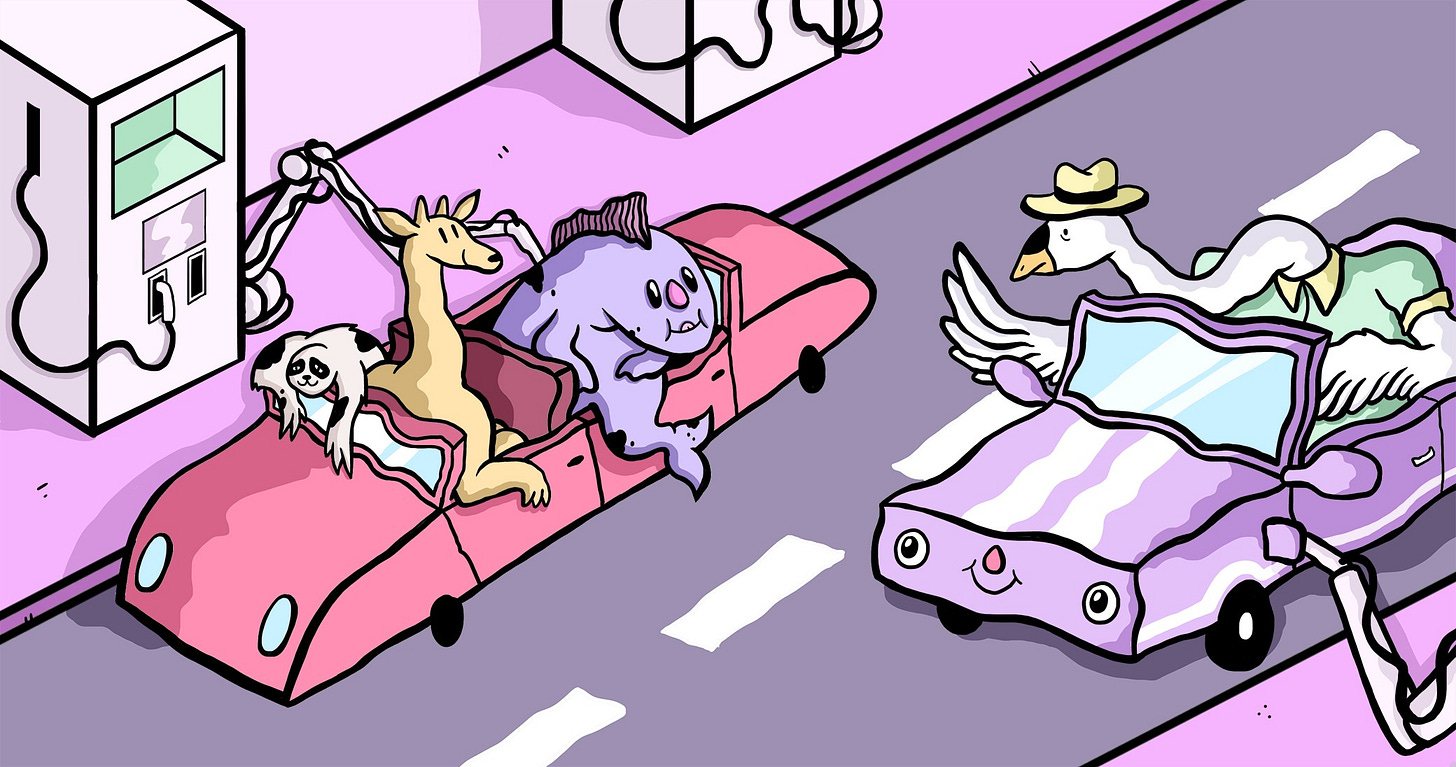How will the Electric Vehicle Landscape Look in a Post-COVID World?
Rising to the challenge of an increasingly electrified fleet in a low-touch world.

Amidst the daily deluge of negativity, the only beams of light to come out of the COVID-19 pandemic were the significantly positive environmental externalities. Smog lifted from skies, waters ran clearer, wildlife flourished and began to encroach on areas previously unheard of. Maybe, just maybe, this is what we needed to arrest our worrying descent into irreversible environmental collapse. “The Earth is healing, we are disease” became the cry of the eco-worrier, seriously at first, and then got meme’d into oblivion. In between hurling insults at our miserable sourdough starter and sobbing in the shower, there was a cautious optimism that was garnered from the world’s ability to buckle down and work simultaneously on the same problem. Surely when we were on the other side of the virus and we ticked back into our “new normal”, we would pull up our sleeves with our weathered hands, calloused and hardened by all the clapping we did for nurses and essential workers, and solve the biggest problem facing humanity?
The answer is yet to be seen. However one thing we can be sure of is that whenever we do re-start our lives, we will be looking across an immensely different urban environment. I’m already PTSD’ing over the thought of jumping into the Tube on a rainy London Tuesday afternoon. Buses and Subways across metropolitan cities will be running at a hugely reduced capacity. Perhaps employers will seek to enact measures that transport planners have yearned for; peak levelling, staggered starting times, and decentralised satellite offices for geographical clustering of office workers. In most cases that is not possible. So what will happen?
As we inch forward to normalcy, capacity will of course increase across public transport and we will return to the hopeful refuge of the “V-curve” recovery. However, there will surely be what is termed as “scarring”; permanent shedding of habitual public transportation users. “The Scarred” as we shall refer to them, will switch modes, their choice of which will depend on the economic and perceived cost of time. Some will take advantage of cycling habits they picked up over the course of the lockdown, others will walk when weather permits - however where does this leave the humble automobile? Their choice is spilt between private vehicles and ride-sharing. There is of course the option of micro-mobility, but that is reserved for journeys with a short trip length, seasonal journeys or a portion of a journey within a trip chain. They will surely rise in number and frequency, but our main Origin-Destination pairs, Home-Based to Work and Home-Based to School - and their inverse return legs- will need a more robust mode. The Car perhaps?
But this Post-COVID landscape was supposed to be one of environmental healing? A world where we offered our cars and long-distance flights and incessant trips around the globe as a sacrificial lamb to our Mother Earth in exchange for vanquishing this virus. Are we really going to load back onto the roads? Bill de Blasio is perhaps the only thing less popular than that infamous pangolin in New York City, as the creaking, horribly run New York Subway continues to almost insult its passengers by its unreliability, its low standards of safety and inconsistent/limited availability. The T in Boston gears up for every winter like it’s about to venture North of the Wall, its tinny body roaring back and forth across the muddy banks of the Charles, taking hungover students to class, tireless nurses and doctors to work and fund managers to their offices to tweet out humble brags and send “Tell Us How Can I Help?” emails to their portfolio companies. The Tube in London is nightmarish at peak hour on a summers day and is pretty much the complete opposite of social distancing. Buses will be even less attractive with their reduced capacity, the inability to provide socially distanced bus stops to shelter from the weather, and their increased journey time due to the higher congestion of roads.
Maybe it will be The Car.
Early indications from China show a sharp rise in individual car use as commuters balk at the idea of public transportation. “In the month following the deep impact of corona in China, there was a pretty major interest shift away from public transportation”, says Jürgen Stackmann, sales chief for the Volkswagen brand. By the middle of April, congestion in major Chinese cities was back to 90 percent of pre-lockdown levels, while sub-way use lingered at just 50 per cent, according to figures from the FT. Volvo reported that sales in China were 20 per cent higher than in 2019, while the whole market in April was 4.4 per cent higher than a year earlier.
Yikes.
The Mayor of London, Sadiq Khan, has been unerring in his quest to get London’s streets less congested, greener and safer. He has been the scourge of Uber and Mini cab drivers and a thorn in the side of motorists across the capital, whilst continuing to carve out more and more urban real estate for pedestrians and cyclists. The congestion charge has been creeping up year on year, with the exemptions for electric and hybrid vehicles becoming more and more attractive. Two years ago he established the “Electric Vehicle Infrastructure Taskforce”, which brought together representatives from business, energy, infrastructure, government and all of the London boroughs.
The plan outlined a strategy to meet the growing demand of electric vehicles with the relevant charging infrastructure. London currently has more than 20,000 electric vehicles, 1,700 electric taxis and Europe’s largest electric bus fleet. Today’s plan builds on TfL’s successful rollout of over 175 rapid charge points across the city (delivering a full charge in 20–30 minutes) and a growing network of over 1,100 lamp post charging points delivered by boroughs in residential areas. In addition to the infrastructural plan, there is an energy plan around provision of electricity across the grid and plans geared towards ride-sharing fleets and the iconic London Taxis. Khan has vowed to have all ride-sharing vehicles fully electrified by 2025, but will the London urban landscape be forgiving enough for the needs of the drivers? Can they charge when they want, where they want?
He will probably have to get a move on - interest has surged since Boris Johnson announced the first phase of opening the country up and urged anyone returning to work to “avoid public transport as much as possible”. Traffic on AutoTrader, the UK online car marketplace, peaked on the day of the speech at more than 1m views, the highest since the lockdown began in March. Those that commuted by car during the pandemic loved the empty roads and ample parking spaces. “The pandemic has the potential to reverse long-term trends of non-ownership among younger consumers, 35 per cent of whom say they’re looking at buying a vehicle,” says Markus Winkler, head of automotive at the consultancy Capgemini.
However, as we tick towards full resumption those bonuses are dissipating quicker than sales of adult colouring books and subscriptions to DIY cooking kits. Now we remember why we endured those horrible metropolitan public transport commutes. There is a reason why almost 80 per cent of 25–35 year olds have never owned a car before. Actually there are many.
InKen Loach’s 2019 movie, “Sorry We Missed You”, he documents the trials and tribulations of the gig economy workers: how their basic needs weren’t being met by their surrounding environment and how they were being ostracised despite our exponentially growing reliance on them. There was a public outcry across the US where Uber and Seamless drivers were being banned from using bathrooms in stores where they were picking up food for their customers. A cursory look at drivers’ forums across the internet will shed light on how precarious it is just to pee. We have been very poor in our treatment of these workers who are now deemed essential and haven’t flinched throughout this pandemic.
Where do we stand now?
If we are to assume that public transportation usage will decrease and that car trips will increase, and that to offset the environmental impacts of this modal shift, there will be even more stringent controls on carbon emissions (an Ultra Ultra Low Emission Zone in London?) and parking, doesn’t that translate to ride-sharing playing an even more vital role in mobility across our cities? Shouldn’t we start planning for that?
OK, here comes the admittedly shameless plug.
Someone much smarter than me and way more accomplished already figured this whole thing out, found the market segment that was being overlooked by the larger EV charging companies and built a company around it. We just invested in them.
Rohan Puri and James Schiel founded Stable Auto (née Diatom Robotics) in 2016 as a spin out of the MIT Media Lab’s Camera Culture Group. Their initial idea was centred around a robotic arm that recognised a car as it pulled into the bay, and using machine vision components, knew the charging hatch location and the method of charging. The software could be trained on new car models within hours. It was billed as the charging solution for fully autonomous fleets. Except autonomous fleets never really hit the mainstream. They were “five years away from being five years away”. The robotic arms were cool, but that wasn’t the true value of Stable’s offering. There were three main components to Stable Auto; The Network Optimiser, The Coordination API, and the Robotic Arm.
The Network Optimiser synthesises multiple data sources such as vehicle, utility, fleet, charger and network data to algorithmically place Electric Vehicle Chargers at the optimal locations. The Stable Coordination API acts as an “Air Traffic Control” for fleets and chargers, running analytics and processing trip and charging data on the back-end as well the grid usage, and offering routing and payment processing on the front end. The robotic arm was the final link in the chain offering drivers the chance to super charge their cars without leaving their vehicle, a vastly overlooked benefit that catered to disabled drivers that needed to charge without a patron present.
Rohan and James found that although any EV owner could benefit from their offering, it was really the ride sharing fleets that would benefit the most. In the State of California, although they made up less than 0.5% of all the electric vehicles on the road, they utilised 23% of the total energy pulled from chargers. With increasing electrification of ride sharing fleets - spurred into action by directives such as Khan’s - this mismatch would surely swell.
With Stable, an Uber or Lyft driver would log onto their app and based on their previous movement and the predicted demand, Stable’s coordination component would manage their day in terms of when and where to charge to maximise their availability and reduce the time they spend travelling to and from charging points. This better manages the driver’s time, guaranteeing that they are available and charged during the peak usage hours, and sources chargers designed with them in mind, instead of having a Whole Foods employee hawking over them as they tried to eke out some juice before the afternoon surge. From a city planning perspective you are reducing the need for far-flung charging hubs, thereby limiting the empty vehicle kms taxed on roads, reducing queuing around chargers, limiting peak electricity usage off the grid due to simultaneous charging and providing accessible chargers for disabled users.
Also, it’s touch free. Isn’t that a must in our “new normal” after this “unprecedented event”. (Did I hit all of the COVID buzzwords?).
You can read more about Stable Auto here:
https://www.forbes.com/sites/lianeyvkoff/2019/08/01/robotic-ev-fast-charging-stations-planned-for-san-francisco/#d2c42311d22f






